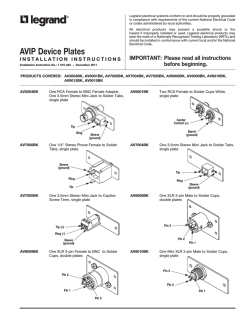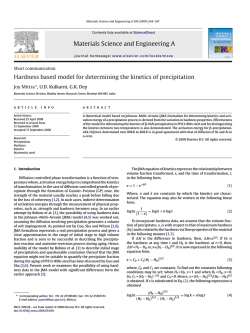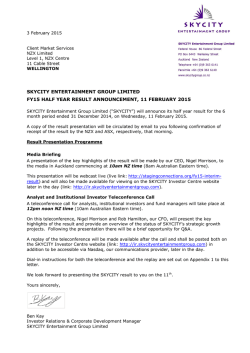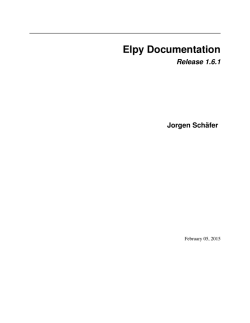
Mapping the Mechanical Properties of SAC 305 Solder
Keysight Technologies Mapping the Mechanical Properties of SAC 305 Solder with Express Test Application Note Introduction The reliability of soldered connections in electronic packaging depends on mechanical integrity, because mechanical failure can cause electrical failure. Mechanical integrity, in turn, depends on mechanical properties. Thus, the purpose of this work was to use an advanced form of nano-indentation to quantitatively map the mechanical properties of all the components of a solder joint. We focus specifically on the SAC 305 solder alloy (96.5% Sn, 3% Ag, and 0.5% Cu) due to its prevalent use in electronic packaging. Generally, solder joints are not uniform. They have a complex microstructure which depends on many factors: the solder and plating materials, the size of the joint (which constrains grain size), and the exposure of the joint to stress and temperature over time. Some alloys favor the development of intermetallic compounds (IMCs) within a tin-rich matrix. In soldered joints, IMC development depends on the metallization used to prepare components for bonding. Copper is typically used for board and electronic terminals. Commonly, a barrier layer of nickel is applied to the copper, followed by a gold layer that protects the nickel and improves wetting. When such terminals are joined by SAC 305 solder, AuSn4 forms in the bulk and migrates to the solder joint interface with time to form a brittle layer. Recently, Mukherjee et al showed that the migration of AuSn4 to the solder joint interface can be inhibited by replacing the Ni/Au metallization with a Sn layer over the copper, even when gold is available from metallization on the mating surface[1]. Nano-indentation (also known as instrumented indentation) is ideal for measuring the mechanical properties of soldered connections, because it is highly localized and requires minimal sample preparation. Traditionally, nano-indentation involves pressing a diamond indenter into a test surface while continuously monitoring the contact force and penetration; hardness and Young’s modulus are calculated from each indentation[2]. In this work, we use an advanced form of nano-indentation, called Express Test, which optimizes the indentation process and data handling for high-speed testing. With Express Test, the indenter tip hovers just over the surface and performs indents in rapid succession to form an array of discrete indentations[3]. Abstract Electronic packaging reliability depends largely on the mechanical integrity of soldered interconnects. Thus, the purpose of this work was to use a new nano-indentation technique, Express Test, to map the hardness of a SAC 305 solder joint with gold plating. In this study after extended aging, the solder joint comprised three constituents: a tin-rich matrix, a bulk intermetallic AuSn4, and an interfacial intermetallic (Cu, Ni, Au)6Sn51. The softest material was the tin-rich matrix, which had a hardness of 0.51 ±0.07 GPa. The hardness of the bulk intermetallic was 2.12 ±0.18 GPa. The interfacial intermetallic had extraordinary hardness— greater than 8 GPa. Under uniform plastic strain, the mismatch in hardness between the interfacial intermetallic and surrounding material may increase the local stress intensity factor which drives interfacial fracture. 1. This parenthetical notation indicates that the intermetallic compound is primarily Cu6Sn5 with absorbed Ni and Au replacing some of the Cu. 03 | Keysight | Mapping the Mechanical Properties of SAC 305 Solder with Express Test - Application Note Experimental Method Sample preparation A soldered connection was prepared to deliberately promote IMC growth. The sample preparation is summarized here and provided in detail elsewhere (sample II-5)[1]. Two mating copper platens received different bonding preparations. The first copper surface was coated with 2.54 μm of Ni, followed by 3.81 μm of Au. The second copper surface was coated with 1.27μm of Sn. The plated copper surfaces were joined using SAC 305 solder produced by Kester using the prescribed reflow. After soldering, the joint was aged for one month at 121 °C (80% of Tmelt). Prior work on this sample has shown that AuSn4 develops in the bulk of the joint and (Cu, Au)6Sn5 develops at the interface with Sn metallization. To prepare the joint for nano-indentation, the sample was mounted in epoxy, ground with silicon carbide paper and polished using alumina suspensions (1, 0.3 and 0.05 μm). Figure 1 shows an optical image of the joint, prepared for nano-indentation Nano-indentation All testing was performed with a Keysight Technologies, Inc. G200 NanoIndenter with Express Test, NanoVision, and an XP head fitted with a Berkovich indenter. With this configuration, indentations can be performed at a rate of one indent every three seconds. The test method “Express Test to a Force” was used to perform two indentation arrays. The first array comprised 40 x 40 indents within a 100 μm x 100 μm area and spanned the breadth of the solder joint. The second array was 40 x 20 indents within a 100 μm x 50 μm area and spanned the interface between the solder and the copper platen with Sn metallization. All indentations were performed to a peak force of 2 mN. Results and Discussions Figures 2 and 3 show side-by-side images of the indentation arrays and the resulting hardness maps. The time required to make the large array (Figure 2) was 68 minutes. Without Express Test, the time required for a similar array of 1600 indents would have been more than a day, because traditional nano-indentation requires about 1 minute per indentation 4. Figure 2. (a) Indentation array on a SAC 305 solder joining two copper platens, and (b) resulting hardness map. Indentations within the top white box are averaged to determine the hardness of the AuSn4; indentations within the bottom white box are averaged to determine the hardness of the tin-rich matrix. Figure 1. SAC 305 solder joining two copper platens. 04 | Keysight | Mapping the Mechanical Properties of SAC 305 Solder with Express Test - Application Note Figure 3. (a) Indentation array on a SAC 305 solder and Sn-plated Cu platen, and (b) resulting hardness map. Indentations within white box are averaged to determine the hardness of the Cu platen. In Figures 2 and 3, the size of the residual impression indicates the hardness, because all indentations were performed to the same force. In softer materials, this force leaves a large residual impression. In harder materials, the impressions are correspondingly smaller. At the interface between the solder and the Sn-plated copper, the residual impressions are deformed—they are not perfectly triangular. This is because the interface is so hard that the surrounding (softer) material is preferentially removed during preparation for nano-indentation, thus leaving a “bump” at the interface. This “bump” compromises the nano-indentation results, because nano-indentation analysis assumes a test surface which is orthogonal to the direction of indentation. An alternate method of preparation, such as focused-ion-beam milling, may be better for exposing soldered surfaces for nano-indentation. The various materials in the joint are distinguished according to hardness. In order to report quantitative hardness values for each kind of material, domains were selected which were clearly and entirely within one kind of material; the white boxes on the hardness maps identify these domains. The quantitative hardness values are summarized in Table 1. The bulk solder is the softest material, having a hardness of about 0.5 GPa. The hardness of the intermetallic AuSn4 which forms in the bulk has a hardness of about 2 GPa, which is similar to that of the Cu. The (Cu, Au)6Sn5 that develops at the Sn-plated platen has extraordinary hardness— greater than 8 GPa. This mismatch in hardness is a concern for reliability, because it means that plastic strains cause much higher stresses in the IMC than in the surrounding material. In other words, a strain large enough to cause plastic flow in the Sn or AuSn4 may cause only elastic deformation in the (Cu, Au)6Sn5, thus causing a discontinuity in stress at the boundary. This discontinuity increases the local stress-intensity factor which drives fracture. Conclusions The goal of the present work was to use nano-indentation to map the mechanical properties of a SAC 305 solder joint, because electronic reliability depends on mechanical integrity. Although we could have used traditional nano-indentation for such mapping, the testing time would have been prohibitively long. However, with the Express Test option for Keysight’s G200 NanoIndenters, we were able to generate quantitative and highly resolved hardness maps in about an hour. The hardness of the tin-rich matrix was about 0.51 ±0.07 GPa; the hardness of the AuSn4 was slightly greater at 2.12 ±0.18 GPa. The (Cu, Au)6Sn5 that develops at the Sn-plated copper platen has extraordinary hardness— greater than 8 GPa. The mismatch in hardness between the (Cu, Au)6Sn5 and surrounding material may increase the local stress intensity factor which drives fracture. Table 1. Hardness of SAC 305 solder-joint constituents. Material Hardness (GPa) Sn-rich matrix 0.51 ±0.07 (N = 16) AuSn4 2.12 ±0.18 (N = 16) (Cu, Au)6Sn5 >8 Cu platen 2.01 ±0.10 (N = 100) 05 | Keysight | Mapping the Mechanical Properties of SAC 305 Solder with Express Test - Application Note References 1. Mukherjee, S., Dasgupta, A., Silk, J., and Ong, L., “Inhibiting the Re-deposition of AuSn4 on Au/Ni Metallization Pads by Varying the Accessibility of Cu in Isothermally Aged SAC305 Solder Joints”, in 2013 ASME International Mechanical Engineering Congress and Exposition (IMECE), 2013, ASME: San Diego, CA, USA. 2. Oliver, W.C. and Pharr, G.M., “An Improved Technique for Determining Hardness and Elastic-Modulus Using Load and Displacement Sensing Indentation Experiments,” Journal of Materials Research 7(6), 1564–1583, 1992. 3. Hay, J., “Revolutionary New Keysight Express Test Option for G200 NanoIndenters,” Keysight Technologies, 2014, Document No: 5990-9948EN, Date Accessed: April 9, 2012; Available from: http://literature.cdn.keysight.com/litweb/ pdf/5990-9948EN.pdf 4. ISO/FDIS ISO 14577-1:2002:”Metallic Materials – Instrumented Indentation Test for Hardness and Materials Parameters – Part 1: Test Method.” This application note was created by Carlos Morillo, Michael Osterman and Michael Pecht CALCE (Center for Advanced Life Cycle Engineering), University of Maryland, College Park, MD in collaboration with Keysight Technologies. Nanomeasurement Systems from Keysight Technologies Keysight Technologies, the premier measurement company, offers high-precision, modular nano-measurement solutions for research, industry, and education. Exceptional worldwide support is provided by experienced application scientists and technical service personnel. Keysight’s leading-edge R&D laboratories ensure the continued, timely introduction and optimization of innovative, easy-to-use nanomechanical system technologies. www.keysight.com/find/nanoindenter For more information on Keysight Technologies’ products, applications or services, please contact your local Keysight office. The complete list is available at: www.keysight.com/find/contactus Americas Canada Brazil Mexico United States (877) 894 4414 55 11 3351 7010 001 800 254 2440 (800) 829 4444 Asia Pacific Australia China Hong Kong India Japan Korea Malaysia Singapore Taiwan Other AP Countries 1 800 629 485 800 810 0189 800 938 693 1 800 112 929 0120 (421) 345 080 769 0800 1 800 888 848 1 800 375 8100 0800 047 866 (65) 6375 8100 Europe & Middle East Austria Belgium Finland France Germany Ireland Israel Italy Luxembourg Netherlands Russia Spain Sweden Switzerland United Kingdom 0800 001122 0800 58580 0800 523252 0805 980333 0800 6270999 1800 832700 1 809 343051 800 599100 +32 800 58580 0800 0233200 8800 5009286 800 000154 0200 882255 0800 805353 Opt. 1 (DE) Opt. 2 (FR) Opt. 3 (IT) 0800 0260637 For other unlisted countries: www.keysight.com/find/contactus (BP-09-23-14) This information is subject to change without notice. © Keysight Technologies, 2013 - 2015 Published in USA, January 28, 2015 5991-3686EN www.keysight.com
© Copyright 2025







